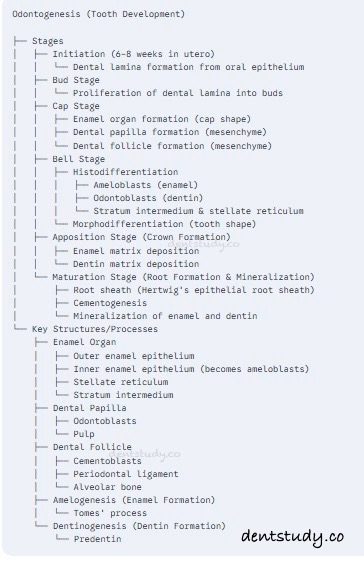January 22, 2025
| No Comments
DENTAL ANATOMY, EMBRYOLOGY AND ORAL HISTOLOGY
🔎 Long Essay
Q. Write an essay about tooth development. Add a note on histological and morphological differentiation of odontogenesis.
Ans.
📌 Tooth Development (Odontogenesis)
👉 Tooth development, also known as odontogenesis, is a complex, highly regulated process that begins early in embryonic life and continues through early childhood. It involves interactions between the oral epithelium and the underlying ectomesenchyme, leading to the formation of primary and permanent teeth. The process can be divided into several stages, each marked by distinct morphological and histological changes.
👉 Tooth development, or odontogenesis, is a complex process involving reciprocal interactions between oral epithelium and underlying mesenchyme, leading to the formation of teeth. This process is conventionally divided into several overlapping stages: initiation, bud, cap, bell, apposition, and maturation.

Important Links
-
Account
-
Privacy Policy
-
Cookies Policy
-
Refund
-
Free Downloads
Subscribe to our Newsletter
Enter your email address to receive our Free Newsletter for key Exam and Resource Updates
error: Content is protected !!
✕


